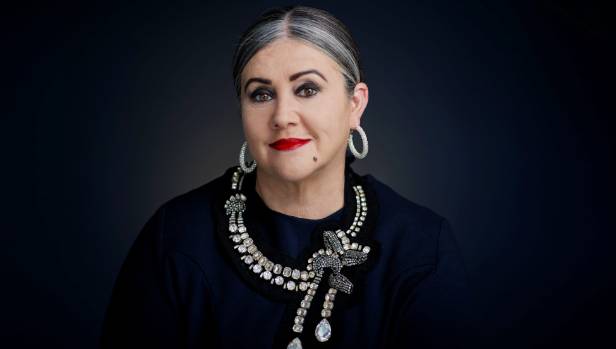
Denise L’Estrange-Corbet, World’s co-founder, has come under fire for the sourcing of her clothes.
A retail expert says fashion brand World has been hurt by claims that it has misled consumers about where its clothes are made.
World, the first fashion brand to be endorsed by UN, has been vocal about the importance of making its clothes in New Zealand and not supporting brands that made their clothes in sweatshops overseas.
The company is owned by Dame Denise L’Estrange-Corbet and Francis Hooper.

World has taken down the web-page selling the strawberry sequin T-shirt, which Spinoff found was purchased from a Hong-Kong based seller.
But a Spinoff investigation found that materials of World’s clothing were sourced from Bangladesh and China.
First Retail managing director Chris Wilkinson said it was critical that L’Estrange-Corbet responded carefully to the concerns about World’s supply chain as she risked further damaging the brand’s reputation.
READ MORE:
* Francis & Denise: WORLD style in sync
* New Zealand designers share how they stay afloat in the world of fashion
* The truth behind the barcode of fashion
“At face value there appears to be a double standard here as she’s gone on the record to criticise other brands for manufacturing overseas,” Wilkinson said.

First Retail Group managing director Chris Wilkinson says consumers hold a great level of trust in the product they buy.
The Commerce Commission received two complaints about World’s t-shirt labelling on Monday morning.
A commission spokesman said it would assess the complaint before deciding if it would investigate the matter.
World has taken down the web-page selling the strawberry sequin T-shirt.
The red and white striped t-shirt the sequin patch was sewed on was from the brand AS Colour and made in Bangladesh.
L’Estrange-Corbet told said World had sourced clothes from AS Colour for seven years and was fully aware of the working conditions where the clothes were made.
“The garments are not sold as they are manufactured; they are all hand embellished/printed and hand finished, by us, in New Zealand, and available within our physical stores and online store,” L’Estrange-Corbet said.
World’s garments stated where they were made but not in the main label, in a tag on the inside seam.
She didn’t believe the brand was misleading consumers.
“The World clothing tags that say Made in NZ are Made in NZ, so there is nothing misleading about this. As explained, the t-shirts do not state this.
Consumer NZ head of research Jessica Wilson said consumers would reasonably expect that clothing labelled as New Zealand made was manufactured here.
“In our view, putting a label on a garment that claims the product is NZ-made, when it’s not, is misleading.
“Consumers who want to support local manufacturers would justifiably feel ripped off if they’ve bought goods that give a misleading impression about the country of origin.”
Wilson said the organisation would like the commission to investigate complaints about World’s labelling.
Wilkinson said World had grown from a boutique store to a bigger brand and one of the issues that came with that was sourcing for greater demand.
The company recently opened a store in Christchurch and Queenstown.
L’Estrange-Corbet also told The Spinoff that the brand’s swing tag were not misleading and were also made in New Zealand.
Earlier this year Hooper said the brand refused to make its clothes in “third world” countries.
“To survive today … when physically everything we make is here and then shipped, is very hard indeed, but that is the hand we have been dealt.
“We refuse to make our collections in a third world country, so we have to be different, be special and, most of all, be a brand that is glitter-filled in a marketplace which is filled with boring product,” Hooper said.
L’Estrange-Corbet said the sequins were sourced from Hong Kong where Hooper had grown upand was aware of the practices there.
The businesswoman once told the media she would not be able to sleep at night knowing her garments were made by children.
She also said that The Spinoff’s inquiry into World’s supply chain was an example of the tall poppy syndrome.
Wilkinson said this was an inappropriate response which could hurt how consumers saw the brand.
“In today’s market consumers hold a great level of trust and sourcing of products has become very important. Especially for a premium brand.”
He said the company had to act fast to respond the the issue and show the transparency in its supply chain.
[“Source-stuff”]







